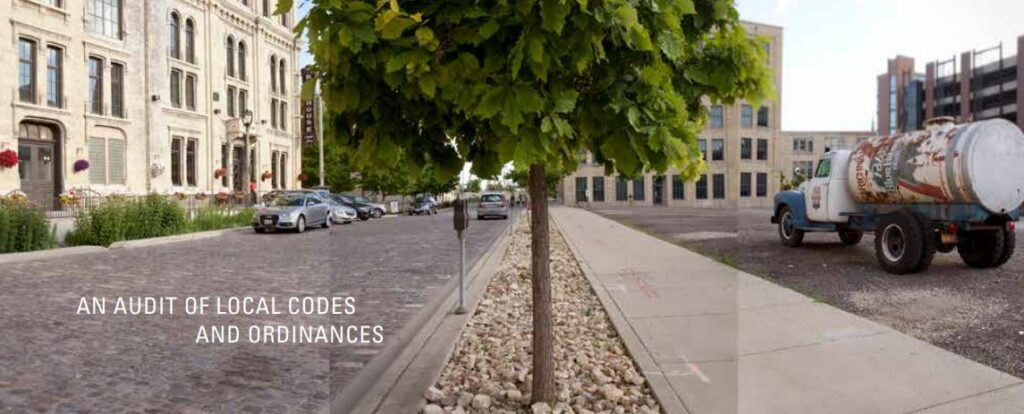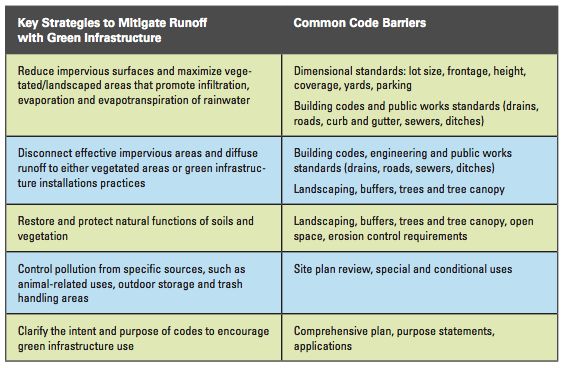
Tool for municipalities to identify codes and ordinances that hinder green infrastructure placement.
Green Infrastructure Code Audit Workbook
Overview
The University of Wisconsin Sea Grant’s Tackling Barriers to Green Infrastructure: An Audit of Municipal Codes and Ordinances is a tool for municipalities to use in order to identify codes and ordinances that hinder green infrastructure (GI) placement. It was created and tested by the Wisconsin Coastal Management Program, the Milwaukee Metropolitan Sewerage District (MMSD), and 1000 Friends of Wisconsin. GI involves the use of living infrastructure and impervious surfaces (trees, rain gardens, porous pavement, green roofs, etc.) to manage many issues including flooding, stormwater runoff, coastal erosion, the urban heat island effect, and CO2/particulate pollution among others. However, many communities still have antiquated regulations that don’t allow for GI practices to be implemented.
“Barriers to GI can vary widely within the code language, including specific rights, specific prohibitions, partial limits and practices mentioned with no guidelines for implementation or maintenance.”
The workbook focuses on 5 key strategies for adding GI friendly regulations into local codes and ordinances: (1) reduction of impervious surfaces, (2) disconnection of effective impervious areas, (3) restoration of natural functions, (4) standards for specific land uses that can generate stormwater pollution, (5) encourage the use of green infrastructure in comprehensive plans, grant applications and purpose statements as the preferred approach to stormwater management.

Key strategies for mitigating runoff with greater implementation of green infrastructure in local codes and corresponding common barriers. Courtesy of Juli Beth Hinds, Orion Planning and Design.
Audience
This workbook is designed to help communities identify outdated, unclear, or prohibitive regulations and suggest language to modify them in order to allow for more GI friendly codes and ordinances. Typical users of this workbook include county and municipal staff especially those involved in zoning, land use, urban forestry, stormwater, and engineering. Secondary audiences include planning and zoning commissioners and board members; local elected officials; and consulting civil engineers, landscape architects, and planners who prepare development, landscape, and engineering plans. Organizations, nonprofits, university extension, and government agencies whose mission is to protect water resources or promote community resiliency might also be interested in using this tool to advance GI.
Decision support
The workbook provides an easy to follow “How To” guide that leads the user through the 3 main steps of auditing local codes and audits: (1) Community scoping, (2) Audit your community’s codes and ordinances, (3) Prioritize recommendations and develop a strategy for adoption. All communities are different, and this process allows for the development of a localized and customized audit and revision process. If there are any questions or comments or need assistance with this workbook, please contact Julia Noordyk, water quality and coastal communities outreach specialist, University of Wisconsin Sea Grant Institute at jnoordyk@aqua.wisc.edu or (920) 465-2795.
Find the full workbook here: Tackling Barriers to Green Infrastructure: An Audit of Municipal Codes and Ordinances
Link to WI Sea Grant Green Infrastructure page: https://www.seagrant.wisc.edu/our-work/focus-areas/coastal-communities/green-infrastructure/




